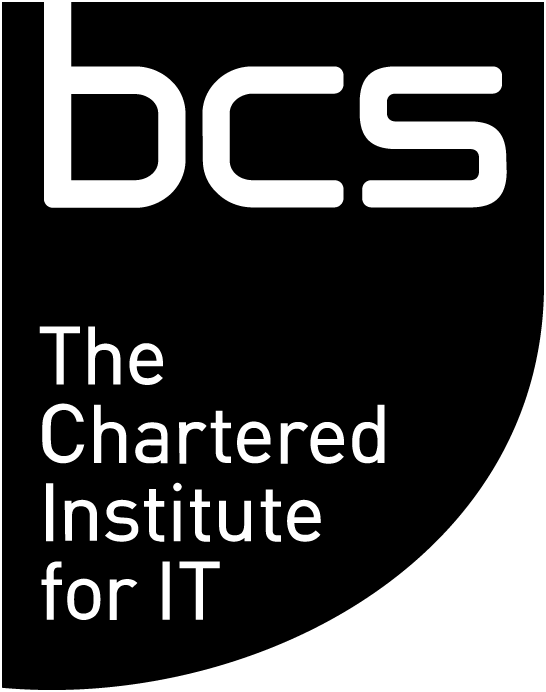BCS Practitioner Certificate in Modelling Business Processes (incl. examen)
- Per deelnemer: € 1.920,00 excl. BTW
-
2 dagen
-
Max 16 deelnemers
- Direct inschrijven

 2 dagen
2 dagen 
 Max 16 deelnemers
Max 16 deelnemers Deze 2-daagse BCS Practitioner Certificate in Modelling Business Processes training bereidt je optimaal voor op het bijbehorende examen. Na het succesvol afleggen van dit examen beschik je over het internationale certificaat: Practitioner Certificate in Modelling Business Processes van BCS. Het betreffende examen is inbegrepen bij deze training. Je leert in deze training inzicht te krijgen in het modelleren van bedrijfsprocessen en op het onderzoeken, modelleren, analyseren en verbeteren van bedrijfsprocessen.
Je leert hoe je bedrijfsprocessen kunt onderzoeken, modelleren, analyseren en verbeteren. De training en het certificaat omvatten het volgende:
Praktijkervaring in business analysis wordt aanbevolen. Of je hebt de training BCS Foundation Certificate in Business Analysis gevolgd. Twijfel je of deze cursus past bij jouw kennis en/of ervaring? Neem dan contact met ons op voor advies.
Deze training wordt in het Engels en Nederlands gegeven.
Bij de training ontvang je passend lesmateriaal.
Bij deze training is een examenvoucher voor het Practitioner Certificate in Modelling Business Processes examen inbegrepen. Na het volgen van de training kan je zelf het examen inplannen. Het examen bestaat uit 40 meerkeuzevragen en duurt 60 minuten.
Bekijk ook onze andere BCS trainingen.
The Context for Business Processing Modelling 15%
1. Candidates will be able to:
1.1 Demonstrate an understanding of the purpose and benefits of business process modelling.
1.2 Identify the three levels of the business process hierarchy; organisation, process and task level.
1.3 Explain the importance of the process view versus the functional view of an organisation.
1.4 Describe the use of the POPIT model in assessing the impact of a new process design.
1.5 Discuss the use of pilot, phased, direct changeover and parallel running to implement business change.
2. The Organisational Context for Business Processes 20%
Candidates will be able to:
2.1 Understand the construction of an organisational level model of business process for a given business scenario.
2.2 Understand how to construct an organisational model for a given scenario (Paul et al, Business Analysis, 3rd Edition).
2.3 Apply knowledge to distinguish between the external and internal elements of an organisational model.
2.4 Explain how the processes on the organisational model support the delivery of the value proposition.
3. Modelling the Business Processes 30%
Candidates will be able to:
3.1 Understand the construction of a business process model for a given business scenario, using the following elements:
3.1.1 Actors.
3.1.2 Swim lanes.
3.1.3 Tasks.
3.1.4 Decision points with guard conditions.
3.1.5 Start and end points.
3.1.6 Process flows.
3.1.7 Forks and joins.
3.2 Explain why using a standard notation set is important.
3.3 Apply knowledge to distinguish between the terms process, task and step; describe how they relate to each other.
3.4 Demonstrate that a task typically involves one person (actor) at one place at one time (OPOPOT), and that it is represented as a single ‘box’ on a process model.
3.5 Based on a given business scenario, identify external, internal and time-based business events.
3.6 Explain the difference between internal performance measures and customer expectations of performance.
4. Documenting Tasks 15%
Candidates will be able to:
4.1 Understand how to construct a task description for a given business scenario, which includes the following elements:
4.1.1 The name of the task.
4.1.2 The actor (or role) carrying out the task.
4.1.3 The trigger or business event that initiates the task.
4.1.4 Any inputs to the task.
4.1.5 The outputs expected from the task.
4.1.6 The costs associated with the task.
4.1.7 The measures that are applicable to the task.
4.1.8 The standards that constrain the task.
4.1.9 A detailed breakdown of the steps within the task.
4.1.10 The business rules that are to be followed in performing the task.
4.2 Demonstrate an ability to document the steps and business rules within a task, using UML activity diagram notation, or structured English.
5. Improving Business Processes 20%
Candidates will be able to:
5.1 Apply the following approaches to improving business processes: task automation; removal of gaps and disconnects; process re-engineering.
5.2 Show understanding of the need to challenge business rules and assumptions when improving business processes.
5.3 Identify the areas of a business process that may contribute to unsatisfactory performance from a given scenario.
5.4 Explain the use of business scenarios in identifying combinations of conditions that the improved business process will need to handle.
5.5 Conduct a gap analysis on a given ‘to be’ business process model, in order to identify the functional requirements for the IT system support for that business process.
Kosten per deelnemer: € 1.920,00 excl. BTW
Max. deelnemers: 16
De genoemde cursustarieven zijn per persoon, exclusief 21% BTW ( BTW nummer wordt vermeld op de factuur), inclusief alle actuele lesmaterialen, een naslagwerk (Pdf) en een certificaat van deelname. Er zijn dus geen bijkomende kosten achteraf.
Als je je aanmeldt met een groep van vijf of meer personen voor een cursus op jouw bedrijfslocatie (in-company), dan kunnen wij een aantrekkelijk groepstarief aanbieden. Voor informatie over onze groepstarieven kun je telefonisch via 020 – 820 83 62 contact opnemen of hier een offerte aanvragen.
Werkgevers
Als werkgever kun je de volledige opleidingskosten voor werknemers aftrekken als bedrijfskosten. Dit geldt voor de opleiding zelf, maar ook voor andere kosten als boeken, inschrijfgeld, administratiekosten, het certificaat of extra begeleiding. Bij SignOn zijn al deze kosten al bij de prijs inbegrepen.
Of wil je weten of deze training bij je past. Neem dan vrijblijvend contact op via info@signon.nl of bel ons op 020 – 820 83 62.
Kies de lesmethode die het best bij je past. Deze training kun je op de volgende manieren volgen:
Meldingen